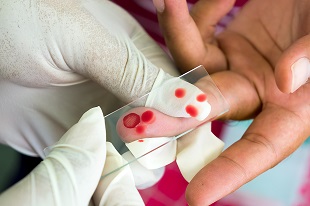Fast, accurate and cost-effective test to help eradicate malaria

Related topics
Health Innovation International cooperation Health, Demographic Change and Wellbeing Belgium Netherlands United Kingdom Nigeria Burkina Faso Tanzania, United Republic Ofdate: 08/06/2015
Project: "Multi-drug resistance in malaria under ...
acronym: MALACTRES
See also: CORDIS
In recent decades, global efforts to prevent and treat malaria have saved millions of lives. But each year around 200 million people are still infected with the malaria parasite and 600 000 die from the disease, mostly children and pregnant women in Africa, according to the World Health Organization. Almost all cases of severe or fatal malaria are due to an infection by a species known as Plasmodium falciparum – a virulent strain of the parasite.
“Early and accurate detection of Plasmodium falciparum not only helps individual patients by increasing the efficacy of treatment, it can greatly enhance eradication efforts by ensuring asymptomatic individuals are also diagnosed and adequately treated, thus eliminating a source of transmission,” explains Henk Schallig at the Royal Tropical Institute in the Netherlands.
Schallig coordinated the five-year MALACTRES project, which laid the groundwork for ongoing research into the development of a more accurate diagnostic test for malaria, including Plasmodium falciparum. A prototype diagnostic tool developed in that project and field tested in Kenya, Burkina Faso and Thailand is now being refined through DIAGMAL, a follow-up project also supported by the EU and coordinated by the Royal Tropical Institute.
Combating malaria resistance
In MALACTRES, researchers from Europe and Africa also studied another factor in the fight against malaria: the increasing resistance of the Plasmodium falciparum parasite to different treatments.
“We have seen that the malaria parasite develops resistance to each new treatment that is introduced. Chloroquine, which was introduced after World War II, lost its efficacy within about 30 years, and now there are signs from South East Asia that the current first-line treatment, artemisinin-based combination therapy (ACT), is also losing its efficacy,” Schallig says.
The MALACTRES researchers investigated the existence of specific resistance genes associated with increased parasite transmission after treatment, and assessed the impact of various genes on parasite prevalence, longevity and transmission. Trials on patients treated with ACT in Kenya and Burkina Faso showed evidence that its efficacy has fallen, underscoring the need for not only a new approach to treating the disease, but also for prompt and effective diagnosis so the parasite can be eliminated before it begins to develop resistance.
On the one hand, the MALACTRES team are proposing the use of two different ACT treatments consecutively, and they are currently seeking funding to conduct trials in West and East Africa to validate their approach. On the other hand, they are also concentrating on developing diagnostic tests to quickly and accurately detect malaria parasites.
Their innovative diagnostic tool is being refined in the DIAGMAL project and will soon undergo field trials in Africa and South East Asia. The test uses molecular diagnostic assays based on the polymerase chain reaction (PCR) principle that can be used to detect all known malaria parasite species directly from the blood of an individual. PCR is a relatively cost-effective and simple method to quickly diagnose diseases, identify bacteria and viruses, and carry out other forms of genetic identification. It is also highly accurate.
Schallig says the DIAGMAL tool should be able to detect one malaria parasite per microlitre of blood, a far greater level of sensitivity than most current tests on the market, which are only accurate at around 20 parasites per microlitre. Crucially, the tool is simple to use, requires minimum equipment and resources, and is cost-effective: a single test should cost no more than €5.
SME partners within the DIAGMAL consortium hope to bring the test to market within the next two to three years. Its widespread use, the project coordinator says, will not only help save the lives of individual patients through early detection, but will contribute to efforts to eradicate malaria. The test could also be adapted to screen for other diseases such as dengue fever.
“The test could be used to easily and affordably screen populations in malaria-affected areas. By identifying and treating everyone carrying the parasite – even those without symptoms and with tiny parasite amounts in their blood – a major source of malaria transmission would be eliminated,” Schallig says.
Below read-out of a direct on blood PCR-NALFIA stick for Pan-Plasmodium
© Johanna Roth – KIT 2015
